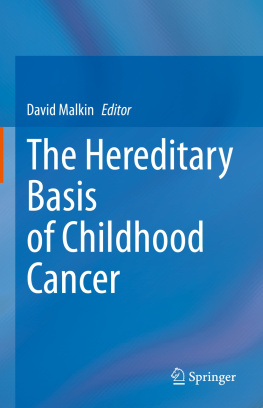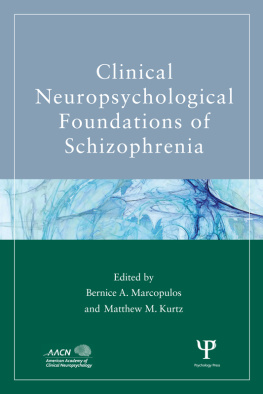Human Embryology and Developmental Biology
Fifth Edition
Bruce M. Carlson, MD, PhD
Professor Emeritus, Department of Cell and Developmental Biology, University of Michigan, Ann Arbor, Michigan
Saunders
Table of Contents
Copyright

1600 John F. Kennedy Blvd.
Ste 1800
Philadelphia, PA 19103-2899
Human Embryology and Developmental Biology, Fifth Edition ISBN: 978-1-4557-2794-0
Copyright 2014 by Saunders, an imprint of Elsevier Inc.
Copyright 2009, 2004, 1999, 1994 by Mosby, Inc., an affiliate of Elsevier Inc.
All rights reserved. No part of this publication may be reproduced or transmitted in any form or by any means, electronic or mechanical, including photocopying, recording, or any information storage and retrieval system, without permission in writing from the publisher. Details on how to seek permission, further information about the Publishers permissions policies and our arrangements with organizations such as the Copyright Clearance Center and the Copyright Licensing Agency, can be found at our website: www.elsevier.com/permissions.
This book and the individual contributions contained in it are protected under copyright by the Publisher (other than as may be noted herein).

Notices
Knowledge and best practice in this field are constantly changing. As new research and experience broaden our understanding, changes in research methods, professional practices, or medical treatment may become necessary. Practitioners and researchers must always rely on their own experience and knowledge in evaluating and using any information, methods, compounds, or experiments described herein. In using such information or methods they should be mindful of their own safety and the safety of others, including parties for whom they have a professional responsibility. With respect to any drug or pharmaceutical products identified, readers are advised to check the most current information provided (i) on procedures featured or (ii) by the manufacturer of each product to be administered, to verify the recommended dose or formula, the method and duration of administration, and contraindications. It is the responsibility of practitioners, relying on their own experience and knowledge of their patients, to make diagnoses, to determine dosages and the best treatment for each individual patient, and to take all appropriate safety precautions. To the fullest extent of the law, neither the Publisher nor the authors, contributors, or editors, assume any liability for any injury and/or damage to persons or property as a matter of products liability, negligence or otherwise, or from any use or operation of any methods, products, instructions, or ideas contained in the material herein.

Library of Congress Cataloging-in-Publication Data
Carlson, Bruce M.
Human embryology and developmental biology / Bruce M. Carlson.5th ed.
p. ; cm.
Includes bibliographical references and index.
ISBN 978-1-4557-2794-0 (pbk.)
I. Title.
[DNLM: 1. Embryonic Developmentphysiology. 2. Fetal Developmentphysiology. WQ 210.5]
612.64dc23
2012036372
Content Strategist: Meghan Ziegler
Content Development Specialist: Andrea Vosburgh
Publishing Services Manager: Hemamalini Rajendrababu
Project Manager: Saravanan Thavamani
Design Direction: Louis Forgione
Illustrator: Alex Baker, DNA Illustrations, Inc.
Marketing Manager: Abigail Swartz
Printed in China
Last digit is the print number: 9 8 7 6 5 4 3 2 1 
Dedication
To Jean, for many wonderful years together.
Preface to the Fifth Edition
As was the case in the preparation of the fourth edition (and for that matter, also the previous editions), the conundrum facing me was what to include and what not to include in the text, given the continuing explosion of new information on almost every aspect of embryonic development. This question always leads me back to the fundamental question of what kind of book I am writing and what are my goals in writing it. As a starting point, I would go back to first principles and the reason why I wrote the first edition of this text. In the early 1990s, medical embryology was confronted with the issue of integrating traditional developmental anatomy with the newly burgeoning field of molecular embryology and introducing those already past their formal learning years to the fact that genes in organisms as foreign as Drosophila could have relevance in understanding the cause of human pathology or even normal development. This is no longer the case, and the issue today is how to place reasonable limits on coverage for an embryology text that is not designed to be encyclopedic.
For this text, my intention is to remain focused both on structure and on developmental mechanisms leading to structural and functional outcomes during embryogenesis. A good example is mention of the many hundreds of genes, mutations of which are known to produce abnormal developmental outcomes. If the mutation can be tied to a known mechanism that can illuminate how an organ develops, it would be a candidate for inclusion, whereas without that I feel that at present it is normally more appropriate to leave its inclusion in comprehensive human genetic compendia. Similarly, the issue of the level of detail of intracellular pathways to include often arises. Other than a few illustrative examples, I have chosen not to emphasize these pathways.
) and would be particularly interested to learn whether students or instructors believe that there is too much or too little molecular detail either overall or in specific areas.
new information on the development of blood vessels and lymphatics has resulted in major changes.
For this edition, I have been fortunate in being allowed to use photographs from several important sources. From the late Professor Gerd Stedings The Anatomy of the Human Embryo (Karger) I have taken eight scanning electron micrographs of human embryos that illustrate better than drawings the external features of aspects of human development. I was also able to borrow six photographs of important congenital malformations from the extensive collection of the late Dr. Robert Gorlin, one of the fathers of syndromology. This inclusion is particularly poignant to me because while we were students at the University of Minnesota in the early 1960s, both my wife and I got to know him before he became famous. This edition includes a new Clinical Correlation on dental anomalies written by Dr. Pranit N. Kantaputra from the Department of Orthodontics and Pediatric Dentistry at Chiang Mai University in Chiang Mai, Thailand. He has assembled a wonderful collection of dental anomalies that have a genetic basis, and I am delighted to share his text and photos with the readers. Finally, I was able to include one digitized photograph of a sectioned human embryo from the Carnegie Collection. For this I thank Dr. Raymond Gasser for his herculean efforts in digitizing important specimens from that collection and making them available to the public. All these sections (labeled) are now available online through the Endowment for Human Development (www.ehd.ord), which is without question the best source of information on human embryology on the Internet. I would recommend this source to any student or instructor.
Next page





